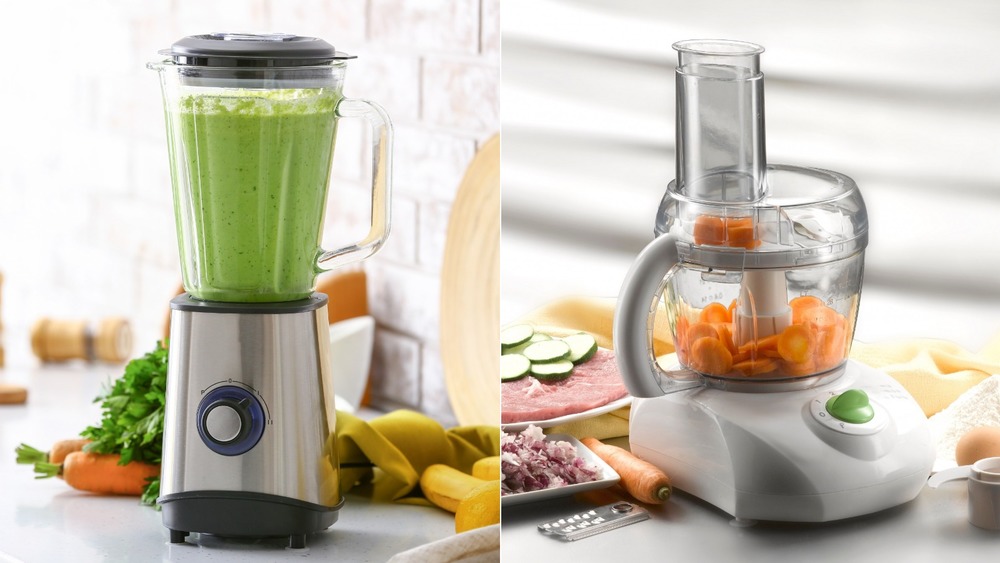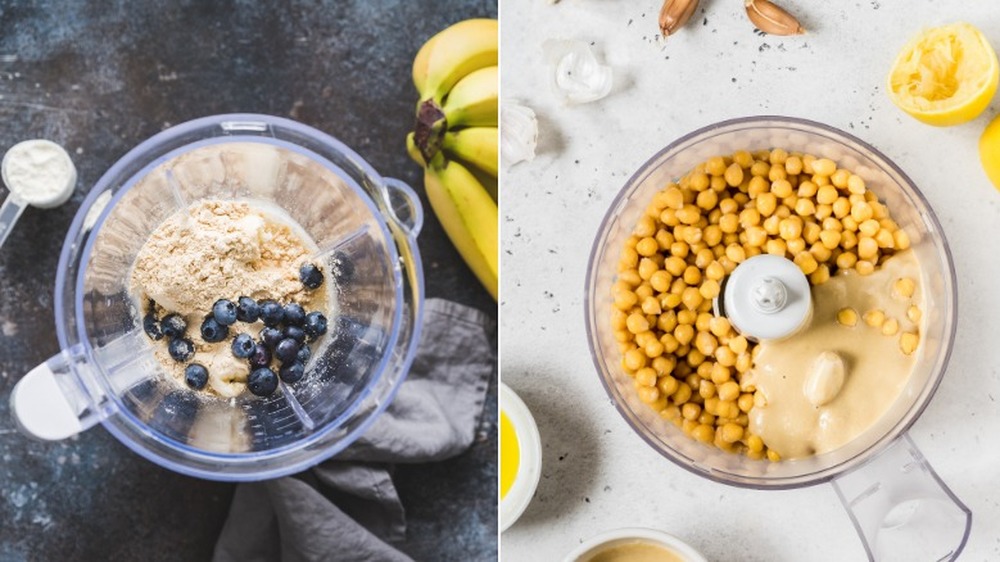Blenders Vs Food Processors: Which Should You Be Using?
Who doesn't love a kitchen appliance that will help simplify recipes and perhaps cut down your cooking time? The dawn of the air fryer saw many finding a way to safely and healthily "fry" their food, while the electric grill made grilling-for-one that much easier due to its size and portability. Another two appliances that have become a must-have (according to Overstock) — the blender and the food processor.
Unfortunately, these two small appliances are oftentimes thought to be interchangeable, The Spruce Eats reports. Although both may have some similarities, they are more like cousins than they are twins. So knowing the differences between the two can benefit you in a myriad of ways. Arming yourself with all the information you may need to make a purchase would not only assist you in making a wise purchase, but could also save you some kitchen real estate (let's face it, very few people have Ina Garten's kitchen square footage at home).
The key differences between a blender and food processor
While both come with a motorized base and a clear body, that's basically it as far as their similarities go when you think about the full purpose of each. According to Good Housekeeping, a blender works well when you are specifically looking to liquify things, while the food processor is great for when you are looking to knead, shred, or chop down large batches of ingredients. Consumer Reports explains that blenders are great for making drinks, smoothies, crushing ice, and pureeing things. The same report details how food processors are great multitasking machines that have blades that can chop, slice, shred, grate, and puree (although Consumer Reports notes that blenders are better at pureeing).
Some food processors even come with a blade that can julienne veggies. Wayfair goes a step further and explains how some food processors even allow for different compartments for you do achieve different tasks simultaneously (#gasp). They can also be filled up to the top and still function properly (blenders can't). Wayfair also explains how food processors work best with dry ingredients as wet ingredients can get stuck to the sides. Blenders, on the other hand, shine when it comes to mixing wet ingredients. If you're looking to puree the ingredients to a gazpacho, a blender is the way to go. It should also be noted that food processors, don't come with additional attachments. So, depending on your lifestyle and tastes, one might be better than the other for you.

